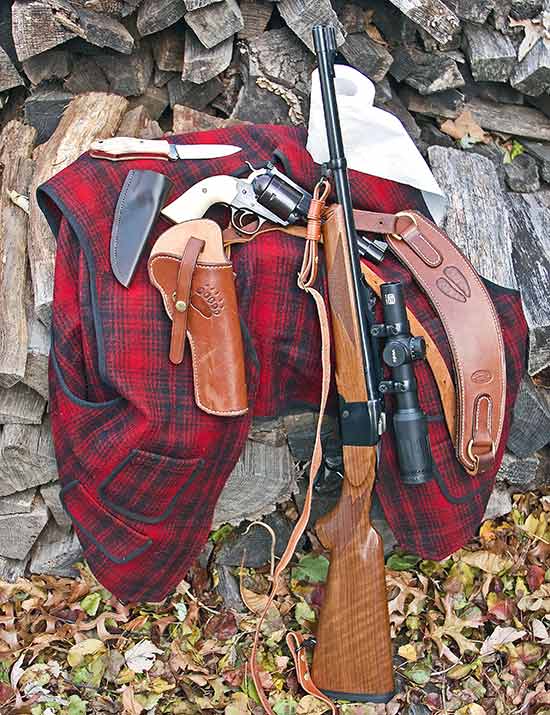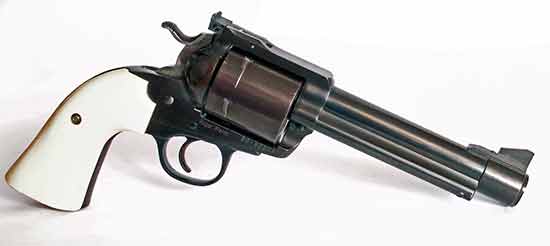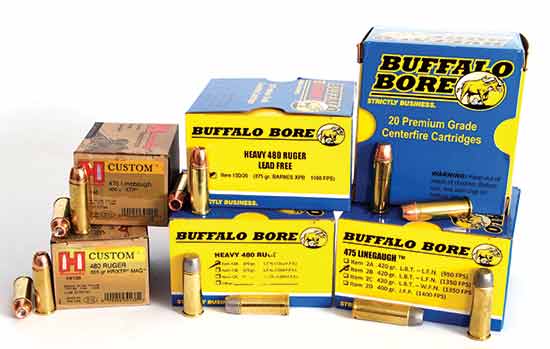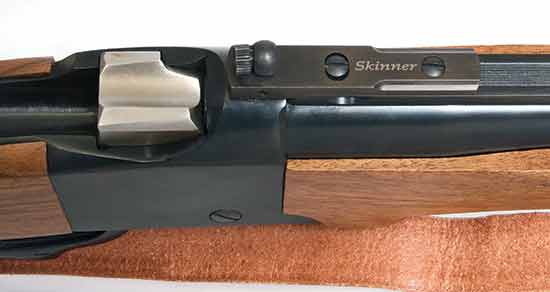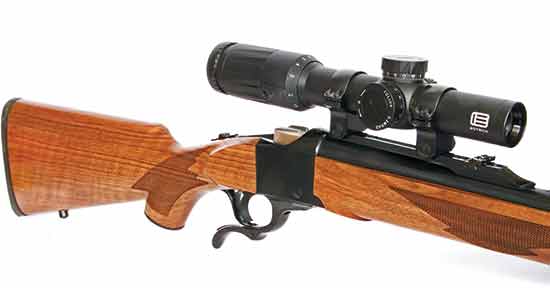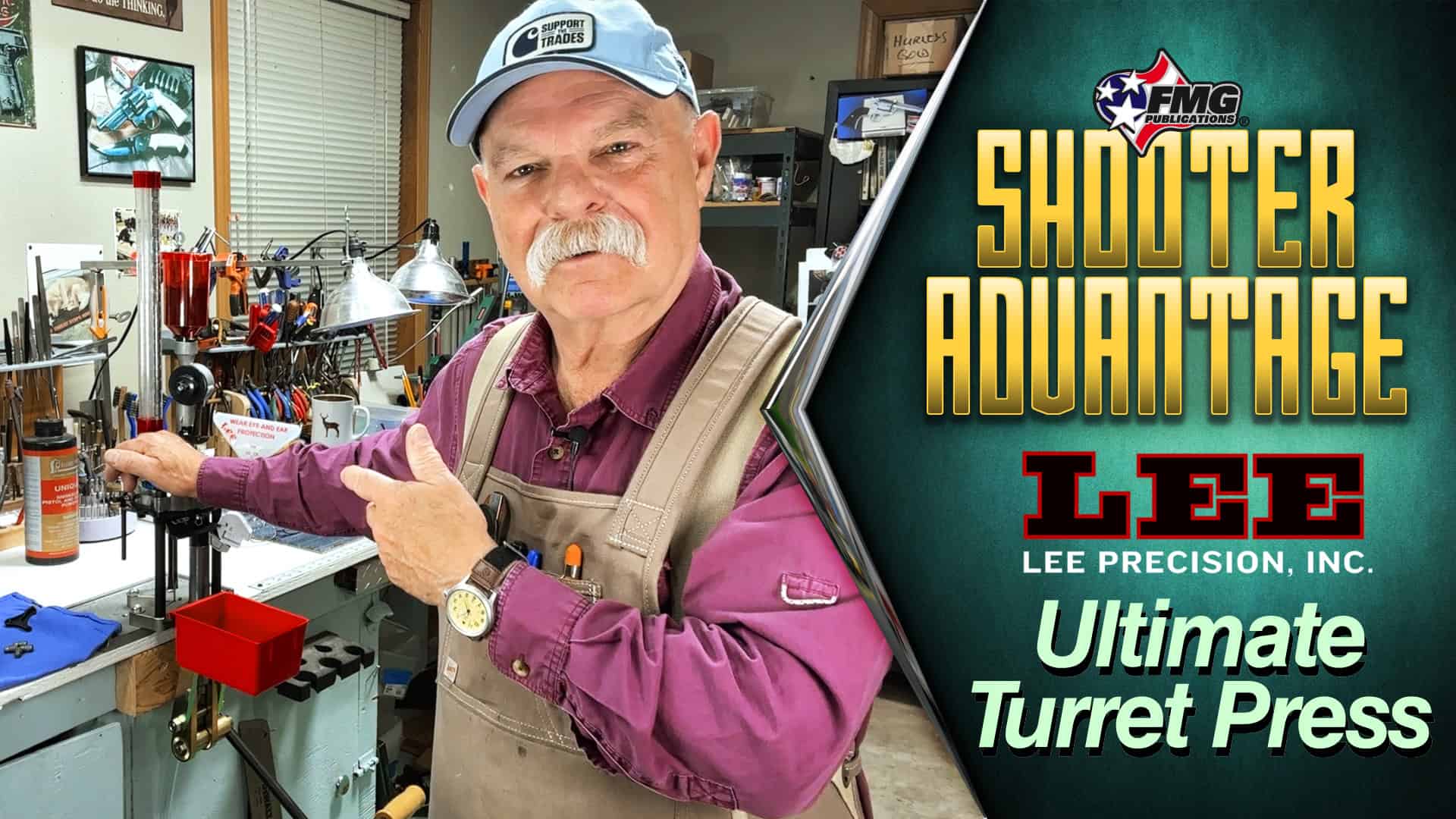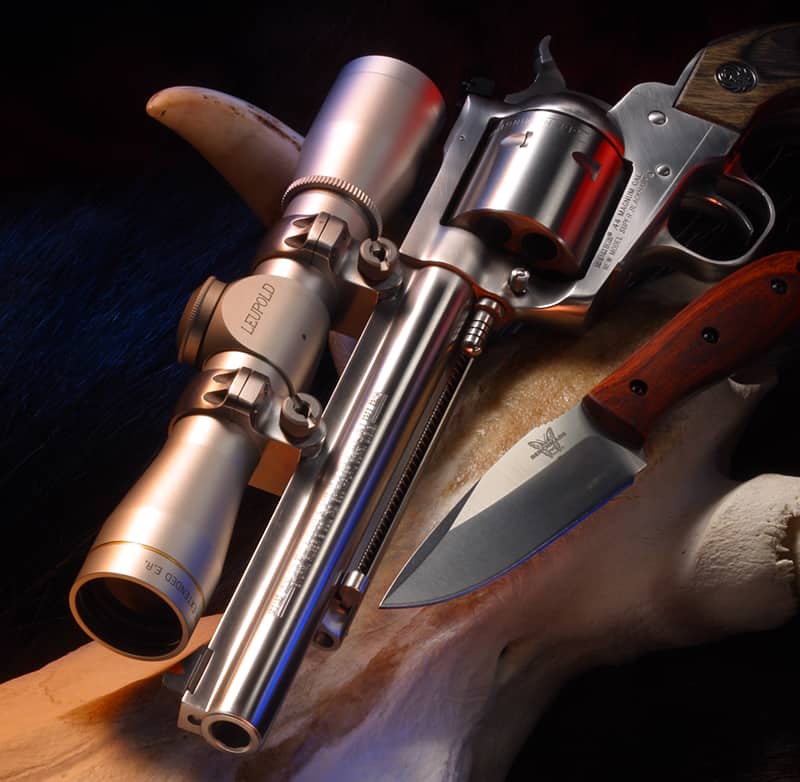Power Couple
A High-Test “Two-Fer” — .475 Linebaugh Ruger No. 1 Meets A Custom Bisley
Bill Ruger’s self-taught mechanical mind was genius-level. Although he had an eye for the classics, his ability to know what people wanted before they ever saw it made him a visionary.
He knew how to build affordable, robust guns with the style of more sophisticated classics. While many scoffed at the idea of a single-shot rifle being introduced into a bolt-action market, Bill confidently smirked, “Just watch.” As a statement, carrying a single-shot says of the owner, “I have the confidence and competence necessary to get the job done with one shot.”
But there are tangible benefits as well. A single-shot rifle is shorter than any rifle with an action — given the same barrel length — by 4″ or so. It is also lighter than a repeater in most instances, making it easier to lug around. Plus, it’s just cool to be hunting with such a beautiful gun.
John Farquharson designed and patented his falling block single-shot rifle in 1872. Ruger designed his No. 1 on the Farquharson action. Using investment casting for the action and parts eliminated machining time and material waste from traditional manufacturing methods, keeping costs down while maintaining quality.
The falling block is extremely robust. In fact, Lenard Brownell said, “There was never any question about the strength of the action. I remember in testing it how much trouble I had trying to tear it up. In fact, I never did manage to blow one apart…”
A Match is Made
In 1986 John Linebaugh developed a cartridge using a cut-down .348 Winchester case for a 0.510-inch bullet, calling it the .500 Linebaugh. In 1988, due to shortages of .348 brass, he developed a new pistol cartridge based on readily available .45-70 cases. John trimmed them to 1.4″ for a .475 bullet and the .475 Linebaugh was born.
Linebaugh built 5-shot revolvers for the new .475. From them, 400-gr.-plus bullets were driven in excess of 1,400 fps. These hand-cannons toppled the largest game on earth.
A bit later — in 2003 — Ruger released the .480 Ruger in the Super Redhawk revolver, reviving interest in “over .44s” with an affordable factory gun. The .480 Ruger is simply a .475 Linebaugh shortened by 0.015. In 2015 the company surprised the big-bore crowd with a long awaited factory 5-shot single-action Bisley revolver chambered in .480 Ruger offered through distributor Lipsey’s. With these hand-cannons more accessible and affordable, a long-gun/revolver combo only made sense.
Again Ruger stepped up to the plate along with distributor Lipsey’s and released the No. 1 in .475 Linebaugh/.480 Ruger. Now it’s possible to traipse through the woods packing a pistol/rifle combo in the same caliber of this magnitude. Big-bore enthusiasts are dancing!
A Looker
The Ruger No. 1 has traditionally been stocked in some of the finest factory wood imaginable. It’s a looker indeed, especially to those nostalgic types with classic wants.
It all starts with the stylish and sexy banded front sight just oozing tradition. As we slowly work our way back down the 20″ barrel, the No. 1 in .475 Linebaugh sports a stylish yet functional barrel-band sling swivel.
Next up is the classic Ruger quarter-rib, which allows you to mount a scope or aperture sight. The factory folding rear sight is also housed here in a tight dovetail. Below, a handsome piece of checkered walnut comprising the Alexander Henry forearm is secured to the barrel.
The falling-block action is simple and sleek — a steel block glides in recessed tracks when activated by an underlever and locks in place to support the cartridge.
A serrated trigger, satin blue job and tang safety add to the classic looks along with the walnut stock. This gem weighs in at 6.9 lbs. and has an overall length of 36.5″.
Shooting The No. 1
I used a 30mm EOTech Vudu 1-6×24 to test the No. 1. It sports an illuminated multi-reticle and changes reticle style depending on the magnification level. For lower settings, a large circle with small crosshair sight is displayed while a traditional hashmarked crosshair sight comes on with higher settings.
The rifle’s accuracy was everything I could hope for while propelling huge chunks of lead downrange. Big bullets make big holes, especially when they cluster around each other. I used both cast and jacketed factory loads from Buffalo Bore, plus Hornady factory loads employing XTP bullets.
For my handloads I loaded cast bullets using Lee molds. Favorite cast handloads consisted of the Lee 400-gr. radiused flatnose loaded over 24 grains of H110 sparked with a CCI 350 Large Magnum primer. Velocity averaged 1,435 fps with groups running 1.4″ at 100 yards for 5 shots. But the No. 1 wasn’t fickle. It shot all ammo under 2″ at 100 yards for 5-shot groups.
Skinner Sights
You don’t need telescopic sights to make a rifle shoot. Many have their looks enhanced with an unobtrusive aperture sight. With several different aperture inserts available in different sizes, you have the freedom to choose which size is right for you.
Smaller “peeps” are great for shooting from the bench to wring out every bit of accuracy potential the rifle has, while a larger peep is better for low-light hunting and quicker target acquisition. Either way, the Skinner Sight is never in the way and has classic looks for such a classic rifle. I’ll keep Skinners on this rifle for my own personal use.
Linebaugh’s Bisley “Fiver”
John Linebaugh builds the guns shooting the behemoth big-bore cartridges he invents. Using large-framed Ruger Bisley Blackhawks for the base, John opens the window for an oversized cylinder. For years this was accomplished with nothing more than skillful hand filing.
There isn’t a lot of daylight peeking between frame and cylinder, nor cylinder face and forcing cone. John keeps his tolerances tight where it matters. He free-spins his cylinders for ease of loading and unloading.
John used a 5.5″ Pac-Nor barrel on my gun, as it’s the perfect length for using his integral barrel-banded front sight to brace the ejector rod housing from flying off under the tremendous recoil-generated torque the .475 Linebaugh can deliver. The revolver weighs 51 oz. and is 11.5″ long overall.
Fitted with a Bowen rear sight, my sight picture is picture-perfect and a great aid to showcasing the gun’s accuracy.
My gun, incidentally, was made June 15, 2001. Checking his notes, John told me,” “Lookee here, the preceding gun was built for Lee Jurras.” John told me he started building his 5-shot .475s around 1988 using old Seville and El Dorado sixguns for the first 27 or 28.
Over the years my gun has shot 900 fps “plinker” loads just as accurately as heavier 1,300 fps loads with bullets in excess of 400 grains. Bullet style isn’t important either. Radiused FN, HPs and cast SWC slugs all shoot swell in this single-action — usually around 2″ or so at 50 yards when I’m up for the task.
Best handloads were 10.0 grs. of Unique over any cast bullet weighing around 400 gr.-plus for 900 fps. Also, 24 grains of H110 over the same sized bullet performed perfectly — 1 to 1.5″ groups are the norm at 25 yards, stretching out to around 2″ at 50.
Factory fodder by Hornady and Buffalo Bore shot just as well with 400-gr.-plus bullets. Jacketed or cast shot equally well.
The cost for converting your Ruger Bisley into a .475 Linebaugh is $3,800.
Ruger’s No. 1 along with my Linebaugh 5-shot Bisley Blackhawk make for a dynamic duo. The idea of carrying a long gun in the same caliber as your pistol is as old as the hills. Reaching in your pocket for a short, fat cartridge and not having to worry which gun it’s for just makes sense.
The Ruger No. 1 is a Lipsey’s exclusive and your local dealer can contact them for you. The price is $1,919.
Lipsey’s
(225) 755-1333
https://gunsmagazine.com/company/lipseys-llc/
John Linebaugh
(307) 645-3332
Simply Rugged Holsters
(409) 276-5199
https://gunsmagazine.com/company/simply-rugged-holsters/
Bill Snow Tipi Knife Works
(706) 576-4390
Barranti Leather
(412) 860-4804
https://gunsmagazine.com/company/barranti-leather/
EOTech
(734) 741-8868
https://gunsmagazine.com/company/eotech/
Skinner Sights
(406) 531-5113
https://gunsmagazine.com/company/skinner-sights/
